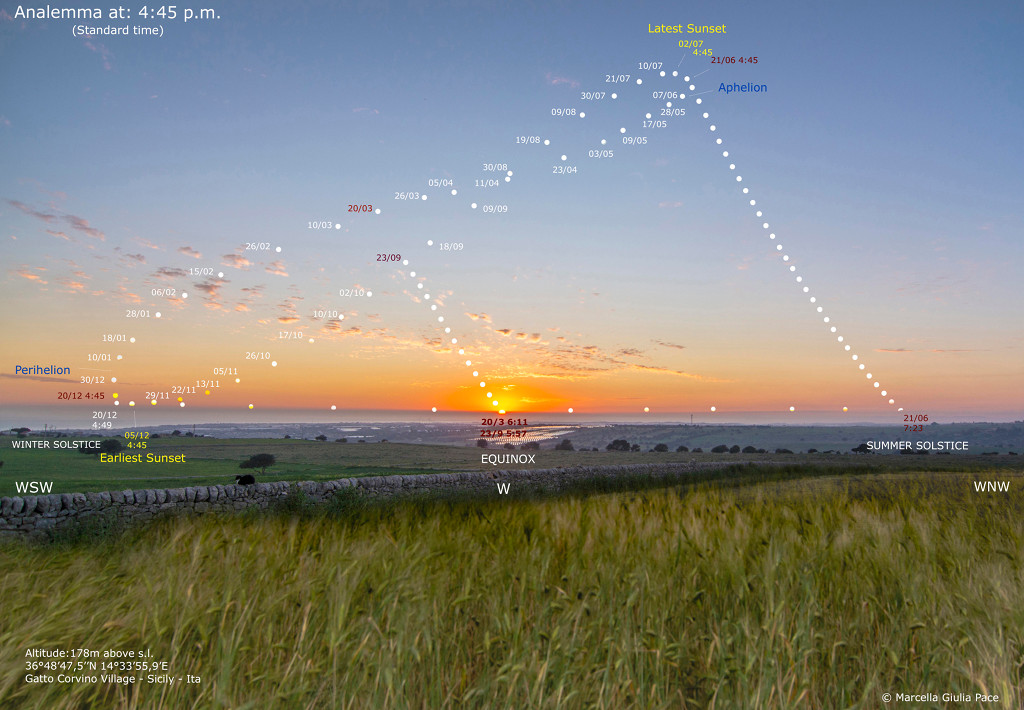2019 June 21
落日时分的日行迹
影像来源及版权: Marcella Giulia Pace
说明:今天世界时间15点54分夏至来临之时,太阳在其每年穿过地球天空的旅程中会到达赤纬最北的位置。在天文学上,夏至标志着北半球夏季和南半球冬季的开始。今天也是北半球日出到日落之间白昼最长的一天。实际上,夏至的太阳位于这幅合成影像的顶部附近,也就是由太阳位置绘制的日行迹或8字曲线最北点。这道日行迹是由从2018年6月21日到2019年6月7日,每十天在同一时间拍摄的影像构建而成。拍摄时间被选择为一年中日落时间最早的冬至附近,因此日行迹的最低点正好与影像左侧一览无余的海平面相接。沿地平线向右(北)分布的落日以秋分的落日为中心,以夏至的落日结束点。
Sunset Analemma
Image Credit & Copyright: Marcella Giulia Pace
Explanation: Today, the solstice is at 15:54 Universal Time, the Sun reaching the northernmost declination in its yearly journey through planet Earth’s sky. A June solstice marks the astronomical beginning of summer in the northern hemisphere and winter in the south. It also brings the north’s longest day, the longest period between sunrise and sunset. In fact the June solstice sun is near the top, at the most northern point in the analemma or figure 8 curve traced by the position of the Sun in this composite photo. The analemma was created (video) from images taken every 10 days at the same time from June 21, 2018 and June 7, 2019. The time was chosen to be the year’s earliest sunset near the December solstice, so the analemma’s lowest point just kisses the unobstructed sea horizon at the left. Sunsets arranged along the horizon toward the right (north) are centered on the sunset at the September equinox and end with sunset at the June solstice.




Pingback: 一年份的日落 – NASA中文